Vous devez être connecté
How to Choose the Right Industrial Lighting?

Proper industrial lighting is one of the most important elements of equipment in production halls, offices, warehouses, and machine workstations. It complements natural light, extends working hours, and enables the use of a shift system. Additionally, it significantly affects employees' health and eyesight, increasing their efficiency and safety.
How to Choose the Right Industrial Lighting?
Choosing the right industrial lighting requires consideration of several factors, such as:
• environmental conditions, including the presence of aggressive chemicals, high temperatures, or dust,
• availability of natural light,
• the type of work performed and the specifics of workstations,
• energy requirements and operating costs,
• industry standards and safety regulations.
Industrial lighting includes not only primary light sources but also specialized lighting, such as:
• emergency escape routes,
• external and surrounding building lighting,
• control lights on production lines,
• lighting for assembly workstations or machines.
Lighting in High Temperatures – Industrial Fixtures
Industrial facilities, such as steel mills, chemical plants, refineries, or power plants, operate in environments where temperatures far exceed the standard working conditions of most equipment. In such places, a key challenge is to ensure reliable lighting that not only withstands extreme temperatures but also guarantees worker safety and operational continuity.
Lighting in high temperatures requires the use of industrial fixtures designed to operate in harsh conditions. For example, in steel mills where ambient temperatures can reach 200°C, traditional light sources fail, which may lead to dangerous situations such as limited visibility or unplanned production downtime.
Fixtures used in such environments feature advanced designs utilizing specialized materials resistant to heat, vibrations, and chemicals. Stainless steel (e.g., 304L) and borosilicate glass are among the primary materials used for housings due to their durability and resistance to aggressive substances. This ensures that the lighting can withstand not only extreme temperatures but also intense chemical processes often associated with heavy industry.
The tightness of industrial fixtures is equally important. Protection standards like IP66, IP68, or even IP69K guarantee resistance to dust, gases, moisture, and hot particles that may be present in such environments. In chemical or petrochemical plants, where the air is saturated with aggressive vapors, high tightness protects electronics from damage, extending the lifespan of the entire lighting system.
Vibrations and shocks are additional challenges, especially in environments with high machine movement intensity. Fixtures are designed to withstand constant vibrations, ensuring that light sources, such as LEDs, maintain their technical parameters. Traditional light sources, such as fluorescent lamps or incandescent bulbs, are less resistant to such conditions. As a result, modern lighting systems increasingly utilize LED technology, which is also characterized by low heat emission.
Thanks to technological advancements, fixtures designed for high-temperature environments are not only more durable but also easier to maintain. Their longevity, often reaching 50,000 hours of operation, significantly reduces the need for replacement or maintenance, which is especially crucial in hard-to-reach areas, such as spaces above furnaces or conveyor belts. Moreover, increasingly implemented IoT systems enable monitoring of the technical condition of fixtures and remote detection of potential problems, further improving lighting management efficiency in such facilities.
In specific applications, such as chemical manufacturing plants or refineries, fixtures must also meet strict explosion-proof safety standards, such as ATEX. In such environments, the risk of explosion caused by the presence of flammable gases or dust is high. Therefore, the fixtures used are designed to eliminate the risk of ignition while providing adequate lighting conditions for work.
In summary, appropriate lighting for industries operating in extreme temperatures is a key factor influencing workplace safety, process efficiency, and operating cost reduction. Advanced technologies make it possible to create solutions that not only withstand the harshest conditions but also offer savings and ease of management, contributing to the improved operation of the entire industrial facility.
LED Lighting in Industry
LED technology plays an increasingly important role in industrial lighting, offering modern, energy-efficient, and environmentally friendly solutions. Compared to traditional light sources such as fluorescent lamps, sodium lamps, or incandescent bulbs, LEDs are significantly more energy-efficient. Thanks to low energy consumption, LED technology contributes to substantial savings in industrial facilities, which often use extensive lighting systems operating around the clock.
One of the key advantages of LED lighting is its long lifespan. Under standard working conditions, LEDs can operate for 50,000–100,000 hours, meaning years of reliable use. For industries, especially those where equipment must operate continuously, this is of great importance. Eliminating the need for frequent replacement of light sources reduces maintenance costs and downtime, positively affecting facility efficiency.
An additional advantage of LEDs is their instant illumination to full brightness. In emergency situations or during changing working conditions, the ability to quickly achieve optimal lighting is invaluable, especially in industries such as logistics, manufacturing, or heavy industry. Unlike traditional light sources that require time to warm up, LEDs ensure readiness to operate immediately after being switched on.
Modern systems based on LED technology also enable advanced light control options. Features such as dimming, remote control via applications, or integration with IoT (Internet of Things) systems allow precise adjustment of lighting parameters to current needs. As a result, it is possible not only to improve work comfort but also to optimize energy consumption, limiting it to the necessary minimum during production breaks or in less frequented areas of the facility.
Challenges and Solutions for LEDs in Extreme Conditions
Although LEDs are exceptionally efficient, their lifespan and performance can be at risk in high-temperature environments. Exceeding permissible temperature values can accelerate the aging of components, such as semiconductors, and ultimately lead to their premature failure. Therefore, in industries operating in extreme thermal conditions, it is necessary to use specially designed LED fixtures.
These fixtures are equipped with advanced cooling systems that effectively dissipate heat generated by the LEDs and power systems. Depending on the application, cooling can be passive (via appropriately designed heat sinks) or active (using fans and other auxiliary devices). In applications such as steel mills, power plants, or chemical plants, where ambient temperatures can reach 200°C, such cooling technologies are essential to ensure stable operation of the lighting system.
An additional solution is the use of materials resistant to high temperatures in the construction of fixtures. For example, enclosures made of anodized aluminum or stainless steel can effectively protect LEDs from the harmful effects of heat and aggressive chemical substances. In such environments, special gaskets and protective coatings are also used to ensure the hermeticity of the fixtures and protect delicate components from dust, moisture, or gases.
It is also important to consider the appropriate selection of the LEDs themselves. In extreme conditions, high-quality LEDs with enhanced thermal resistance are used, capable of operating at temperatures up to 150°C without significant loss of efficiency. Additionally, industries increasingly use LEDs with an extended light spectrum that can be tailored to specific requirements, such as improving visibility in challenging conditions or reducing glare in work areas.
LED technology has revolutionized industrial lighting systems by offering exceptional energy efficiency, long lifespan, and advanced control capabilities. However, in challenging conditions such as high temperatures or aggressive chemical environments, it is crucial to implement appropriate structural and technological solutions. This ensures that LED lighting can not only withstand extreme working conditions but also provide safety, efficiency, and cost savings, contributing to the continuous development of industrial facilities.
Modern Lighting Management Systems
Advancements in industrial lighting technology have introduced numerous innovative solutions that not only enhance energy efficiency but also improve functionality and user comfort. Modern lighting management systems allow for cost optimization and the adaptation of light parameters to dynamically changing work conditions.
Here are the key elements of these systems:
Daylight Sensors
Automatic adjustment of light intensity to natural conditions is one of the most significant achievements in lighting management. Daylight sensors monitor the amount of sunlight in the room and automatically regulate the brightness of artificial lighting.
• Benefits:
o Energy savings by reducing light intensity during daylight hours.
o Increased comfort for employees by avoiding excessive lighting.
o Prolonged lifespan of lighting fixtures.
Motion Sensors
Motion sensor technology allows lighting to be turned off in areas that are not currently in use. This is especially useful in large warehouse spaces, corridors, or loading zones.
• Benefits:
o Minimizing energy losses in irregularly used areas.
o Reducing operational costs.
o Enhancing safety when sensors detect the presence of people in dark spaces.
Remote Control
Modern lighting systems increasingly integrate with applications that enable remote control. Using smartphones, tablets, or computers, it is easy to manage lighting installations in real time.
• Features:
o Adjusting light intensity in specific zones.
o Turning lighting on and off remotely.
o Scheduling lighting according to the facility's work cycle.
IoT Systems
The Internet of Things (IoT) has opened up new possibilities in lighting management. Lamps equipped with sensors and communication modules can collect data on their technical condition, energy consumption, and efficiency. This information is sent to a central system, enabling monitoring and optimization of the entire installation.
• Advantages:
o Early detection of failures and the need for servicing.
o Data analysis enabling the implementation of savings.
o Personalization of lighting according to the needs of specific work areas.
Advantages of Smart Lighting Systems
• Energy efficiency: Modern systems enable energy savings of up to 70% compared to traditional solutions.
• Reduction of operational costs: Automation and optimization reduce energy and maintenance expenses.
• Increased comfort and safety: Users can enjoy appropriately adjusted lighting, which positively impacts their productivity and well-being.
• Ecology: Reduced electricity consumption translates into lower CO₂ emissions, contributing to environmental protection.
Introducing modern lighting management systems into industrial spaces is an investment in the future that quickly pays off through savings, improved working conditions, and compliance with sustainable development principles.
The Role of Standards and Certifications in Industrial Lighting
Industrial lighting must meet numerous standards and legal requirements aimed at ensuring work safety, energy efficiency, and environmental compliance. Implementing standards and certifications helps standardize the quality of lighting installations and ensures their reliability, especially in demanding work environments.
Lighting Intensity Standards
Proper lighting intensity is a key factor influencing comfort and work efficiency. In Europe, including Poland, standards specify the minimum lighting intensity values for different work environments.
• Standard PN-EN 12464-1:
o Applies to indoor workspaces.
o Specifies minimum lighting intensity levels (lux) depending on the type of work performed. Examples:
- 300 lx – general lighting in offices and warehouses.
- 500 lx – lighting for manual or precise workstations.
- 50 lx and above – workstations with particularly high visual requirements.
o Also includes guidelines on light uniformity, glare reduction, and light color quality.
Explosion Safety (ATEX)
In industrial facilities where there is a risk of explosions caused by gases, dust, or mixtures, lighting must meet strict safety requirements.
• ATEX Directive:
o Specifies requirements for equipment used in explosive zones (Atmosphères Explosibles).
o Lighting fixtures must be designed not to act as an ignition source.
o Lamps should have appropriate ATEX certifications confirming their safety.
• Division of explosion hazard zones:
o Zone 0: Areas where an explosive atmosphere is continuously or frequently present.
o Zone 1: Areas where an explosive atmosphere may occur under normal working conditions.
o Zone 2: Areas where an explosive atmosphere rarely occurs and for short durations.
Environmental Certifications
The growing importance of sustainable development and energy savings requires industrial lighting manufacturers to consider ecological aspects in their products.
• Energy certifications:
o High energy efficiency products may carry labels such as Energy Star, confirming low energy consumption.
o LED fixtures meeting strict standards comply with EU directives on eco-design (EcoDesign).
• Environmental certifications:
o Labels like RoHS (Restriction of Hazardous Substances) indicate restrictions on the use of hazardous substances such as lead and mercury in lamp production.
o Certifications such as Cradle-to-Cradle and other lifecycle assessment systems highlight aspects of recycling and waste minimization.
Benefits of Implementing Standards and Certifications
• Ensuring legal compliance: Adhering to standards and regulations minimizes the risk of penalties from regulatory bodies.
• Enhanced safety: Tailoring lighting to the specific requirements of the workplace reduces the risk of accidents and improves working conditions.
• Operational efficiency: Using certified light sources allows businesses to reduce costs associated with operation, maintenance, and energy consumption.
• Building ecological reputation: Products compliant with environmental certifications help companies build an image of environmental responsibility.
Understanding and applying standards and certifications in industrial lighting is not only a legal obligation but also a strategic element that allows companies to achieve higher efficiency, safety, and compliance with sustainable development principles.
Specifics of Lighting for Various Industrial Sectors
Each industrial sector has different lighting requirements. The differences stem from working conditions, the type of tasks performed, and safety regulations and standards. Adapting lighting to the specific needs of a sector is key to ensuring efficiency, comfort, and workplace safety.
Logistics and Warehousing
In logistics and warehousing, lighting must support fast and precise operations such as barcode scanning, product identification, and handling warehouse equipment.
• Precise placement of light sources:
o Well-placed fixtures minimize shadows that can hinder work, especially in narrow shelving aisles.
o Lighting directed at shelves and aisles improves visibility and accuracy.
• Intelligent control systems:
o Motion sensors allow automatic lighting activation only in used zones, reducing energy consumption.
o Zoned lighting helps better manage warehouse space.
• Glare reduction:
o Lamps must be installed in a way that minimizes light reflections from metallic and other shiny surfaces.
Automotive industry
The automotive industry requires high-quality lighting to ensure precision in assembly and effectiveness in quality control.
• Assembly processes:
o High light intensity and uniformity are essential on production lines to allow precise task execution.
o LED lamps with a high color rendering index (CRI) enable operators to accurately distinguish colors and component details.
• Quality control:
o Specialized inspection stations require light sources with stable color and intensity, allowing even minor visual defects, such as micro-scratches on paint, to be detected.
o Adjustable light intensity allows conditions to be tailored to the specific requirements of various production stages.
• Safety:
o Lamps must be vibration-resistant, which is common in production environments within the automotive industry.
Pharmaceutical industry
In the pharmaceutical industry, sterile conditions and the highest hygiene standards are a priority. Lighting must meet the specific requirements of production processes and comply with regulations.
• Disinfection-resistant lamps:
o Lighting used in clean zones must be resistant to the chemicals used for disinfection.
o Coatings of fixtures must be durable, non-corrosive, and easy to clean to prevent contamination buildup.
• Sterility and tightness:
o Lamps should meet high ingress protection (IP65 and above) requirements and resist moisture and microorganism exposure.
o Fixture design must eliminate the possibility of dust and solid particle accumulation.
• Precise color rendering:
o A high color rendering index (CRI) is essential in laboratories where substances and chemical preparations are analyzed.
• Adjustable light intensity:
o Light intensity adjustability allows working conditions in laboratories to be tailored to various production or research stages.
Food industry
Lighting in food processing facilities must be designed to maintain the highest hygiene and safety standards. Lighting fixtures are often exposed to strong cleaning agents, pressurized steam, and hot water. Therefore, solutions made of corrosion-resistant materials, such as stainless steel, and with smooth, seamless surfaces are used to minimize contamination risks.
An important aspect is also shatterproof fixture construction, which prevents food contamination with glass shards in case of lamp damage. For this purpose, polycarbonate or tempered glass covers with increased mechanical resistance are used. Fixtures are also designed to meet rigorous standards such as HACCP (Hazard Analysis and Critical Control Points), ensuring compliance with sanitary and hygiene requirements.
In some cases, food processing facilities require lighting for explosion-prone areas, such as flour or sugar processing zones. In such places, specially certified fixtures compliant with the ATEX directive are used to ensure safety in potentially explosive environments.
Chemical industry
In chemical plants, lighting systems must withstand exposure to aggressive chemicals such as acids, alkalis, solvents, or chemical vapors. Fixtures made of corrosion-resistant materials like stainless steel, anodized aluminum, or high-quality plastics are essential in these environments.
A critical requirement in this industry is also the high tightness of lighting fixtures. Ingress protection standards such as IP66, IP67, or IP68 ensure protection against dust, moisture, and liquids, which is crucial in spaces exposed to chemical emissions or water streams.
In explosion-prone areas, such as chemical production installations or gas storage facilities, lighting fixtures certified according to ATEX standards are required. Equipped with explosion-proof features, these fixtures minimize the risk of ignition of flammable substances while ensuring proper working conditions.
Process monitoring
In many industries, such as logistics, machinery, or precision assembly, appropriate task lighting is critical. On production lines and in process monitoring areas, light sources with a high color rendering index (CRI) are used to enable accurate color reproduction. This allows employees to precisely assess product quality, which is especially important in industries requiring high precision, such as electronics or pharmaceuticals.
One challenge in task lighting is eliminating the stroboscopic effect, which can distort vision and lead to errors in evaluating machine or production line movements. Modern LED fixtures are designed with power systems that eliminate this phenomenon, increasing safety and work comfort.
Task lighting must also be ergonomic – the ability to adjust the angle and intensity of light allows working conditions to be tailored to the individual needs of machine operators or technicians. This improves concentration, reduces eye strain, and increases the efficiency of production processes.
Specialized industrial sectors require advanced lighting solutions that consider specific environmental conditions, such as high humidity, aggressive chemicals, or hygiene requirements. Thanks to modern technologies like LED lighting, it is possible to ensure not only compliance with strict standards but also high energy efficiency, safety, and work ergonomics. Investing in appropriately selected lighting systems contributes to improved production quality, reduced operational costs, and increased competitiveness of enterprises in the market.
Benefits of tailored lighting
• Efficiency improvement: Optimal lighting conditions accelerate operational processes and minimize human errors.
• Increased safety: Adjusted lighting reduces the risk of accidents and helps maintain hygiene standards.
• Energy savings: The introduction of modern solutions such as LED lighting and light management systems reduces energy consumption and operational costs.
Each industrial sector requires an individual approach to designing and implementing lighting systems that support both specific technological and human needs.
Technology and work ergonomics
Modern lighting technologies play a key role in shaping an ergonomic work environment. Properly selected lighting enhances productivity, improves work comfort, and reduces the negative impact on employees' health.
The impact of light color on productivity
Light color plays a significant role in regulating the circadian rhythm and affects employees' energy levels and concentration:
• Cool light (color temperature above 5000 K):
o Promotes increased alertness and efficiency.
o Recommended for environments requiring precision and high focus, such as laboratories, assembly halls, or quality control stations.
o Stimulates the body to act, resembling natural daylight in the morning hours.
• Warm light (color temperature below 3500 K):
o Creates a cozy and relaxing atmosphere, conducive to regeneration.
o Can be used in social areas or during reduced activity periods, e.g., at the end of a work shift.
• Neutral light (around 4000 K):
o Provides a universal solution suitable for most work environments, ensuring a balance between comfort and efficiency.
Application of dynamic lighting
Modern systems allow the adjustment of light color throughout the day to match the natural rhythms of the human body. In the morning, cool lighting can enhance productivity, while in the afternoon, warmer light promotes relaxation and reduces tension.
Lighting and health
Proper light intensity and quality have a significant impact on employees' health, especially in industrial environments.
• Preventing eye strain: Too low light intensity forces the eyes to work harder, leading to eye fatigue, dryness, and reduced efficiency. Conversely, excessive light intensity or glare can cause discomfort and difficulties in concentration. It is recommended to adjust light intensity to workplace requirements, e.g., 500 lux for general office tasks and up to 1500 lux for precise assembly work.
• Eliminating flicker: Light flicker, invisible to the human eye, can cause headaches, fatigue, and reduced concentration. Modern LED systems and electronic control units eliminate this issue, providing stable, high-quality light.
• Impact on circadian rhythm: Improper lighting, especially in shift systems, can disrupt the natural sleep-wake cycle, affecting employees' health and well-being. Human Centric Lighting (HCL) technology allows for the simulation of natural daylight, supporting the regulation of the biological rhythm.
Ergonomic aspects of light placement
In addition to light color and quality, its placement is also important:
• Avoiding glare through proper lamp shielding and positioning.
• Using local light sources at workstations requiring precision.
• Considering individual employee needs, e.g., through adjustable light intensity.
Benefits of ergonomic lighting
Adapting lighting technologies to ergonomic requirements brings numerous benefits:
• Increased work efficiency: Improved comfort and focus.
• Improved health: Reduction of issues such as headaches, eye strain, or sleep disorders.
• Enhanced safety: Better visibility minimizes the risk of accidents.
In conclusion, combining advanced technologies with ergonomic principles creates an environment that supports both employee health and productivity while optimizing energy consumption.
Summary
The selection of appropriate industrial lighting is a key element in ensuring optimal working conditions across various industrial sectors. Lighting must be tailored to the specific requirements of the industry, taking into account factors such as safety, energy efficiency, resistance to harsh atmospheric conditions, and hygiene. The right choice of technologies and manufacturers results in lighting systems that provide not only comfort and safety but also savings and improved production efficiency.
Modern technologies, such as LED lighting, are gaining popularity in the industry due to their numerous advantages. They are characterized by high energy efficiency, long lifespan, and reliability, which is especially important in continuous operation systems. LEDs also allow for immediate illumination to maximum brightness, enhancing convenience and work efficiency, particularly under conditions requiring continuous operation. Thanks to the ability to adjust light intensity (dimming) and remote management via applications, LED systems offer flexibility and complete control over industrial lighting.
Investing in lighting solutions from renowned manufacturers, such as KIRA Leuchten, Sammode, or C.C.E.A., guarantees high quality, reliability, and innovative technologies. These companies offer a wide range of industrial luminaires that meet diverse industry needs, ensuring durability and high performance even in the most demanding conditions.
KIRA Leuchten specializes in providing advanced LED luminaires for industries, including areas with high requirements for light efficiency and safety. The company offers a wide range of products characterized by high resistance to harsh environmental conditions such as vibrations, dust, or extreme temperatures, making them ideal for industries requiring high reliability, such as automotive or chemical sectors.
Sammode is another renowned manufacturer providing lighting solutions dedicated to industry, including ATEX zones where there is a risk of explosions. Sammode products are distinguished by exceptional durability and resistance to harsh working conditions in the chemical, food, or energy industries. Thanks to innovative solutions such as high-sealing luminaires (IP66, IP67), these products withstand extreme conditions while ensuring low energy consumption and minimal operating costs.
C.C.E.A., in turn, specializes in providing LED lighting dedicated to use in challenging industrial conditions, including explosion-prone zones. The company's luminaires combine modern LED technology with the highest safety standards, ensuring both high lighting quality and longevity. C.C.E.A. products are not only resistant to extreme environmental conditions but also easy to maintain, which is particularly important in industries such as food or pharmaceuticals.
Moreover, LED technology allows precise adjustment of lighting to the individual needs of an industrial facility. With appropriate LED lighting, production becomes more efficient, and the workspace is better suited to meet safety, comfort, and performance requirements. Especially for facilities requiring specialized lighting solutions, such as the food or chemical industries, choosing products from manufacturers like KIRA Leuchten, Sammode, or C.C.E.A. ensures high-quality, long-lasting lighting that is easy to maintain and adapted to harsh working conditions.
Investing in LED lighting from renowned manufacturers is a long-term benefit for the industry, translating into reduced operating costs, improved energy efficiency, and enhanced safety. Products offered by KIRA Leuchten, Sammode, and C.C.E.A. ensure that industrial lighting is not only functional but also environmentally friendly, safe, and compliant with applicable standards. Ultimately, a well-designed lighting system is a key element in ensuring production continuity, work comfort, and quality improvement in industrial facilities.




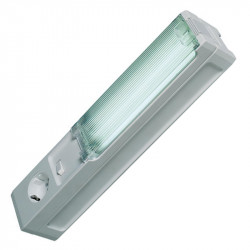
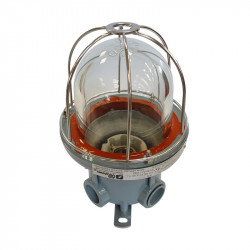
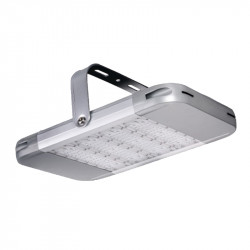
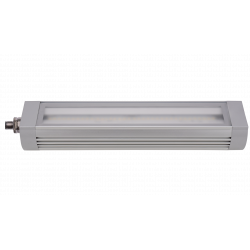
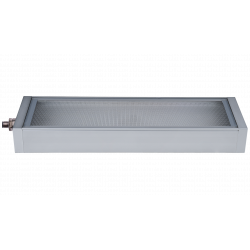
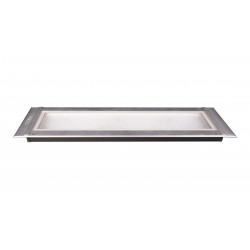
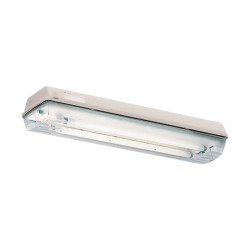
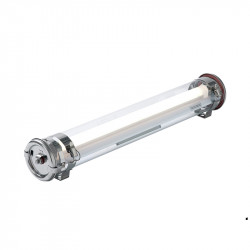

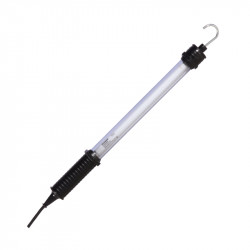
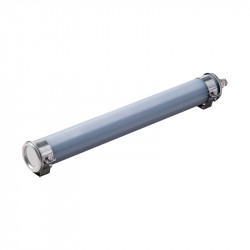
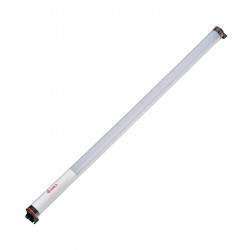
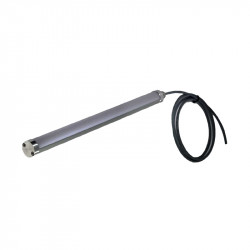
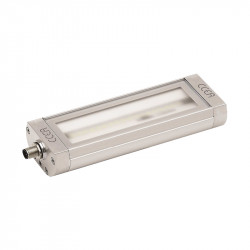
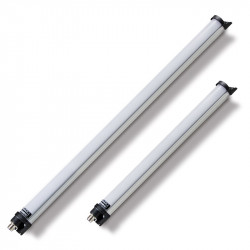
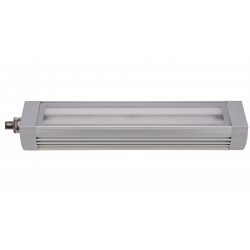
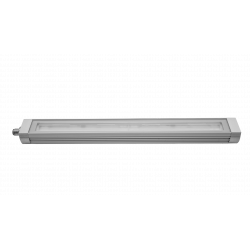
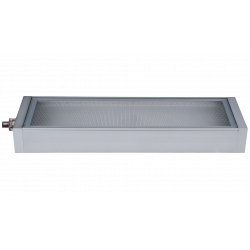
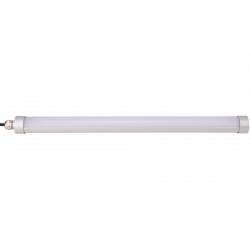

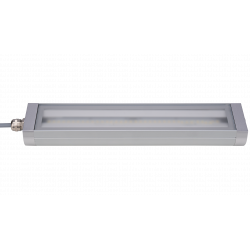
Laissez un commentaire